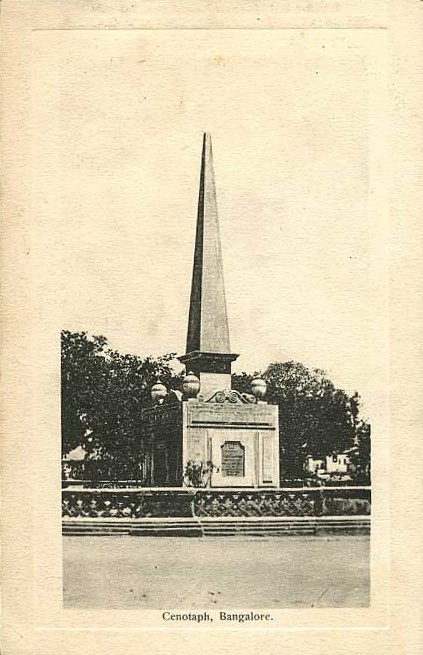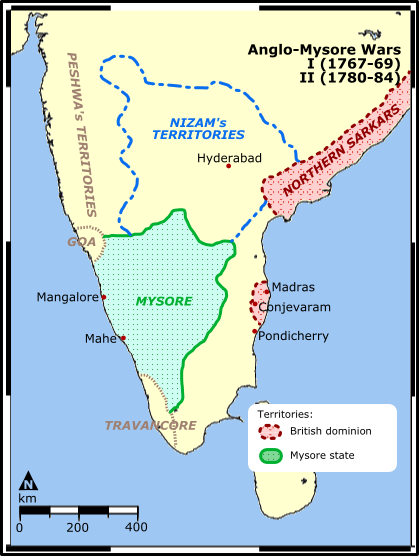|
Tipu Sultan (other)
Tipu Sultan (''Sultan Fateh Ali Sahab Tipu''; 1 December 1751 – 4 May 1799) commonly referred to as Sher-e-Mysore or "Tiger of Mysore", was a ruler of the Kingdom of Mysore based in South India. He was a pioneer of rocket artillery. He expanded the iron-cased Mysorean rockets and commissioned the military manual ''Fathul Mujahidin''. The economy of Mysore reached a zenith during his reign. He deployed rockets against advances of British forces and their allies during the Anglo-Mysore Wars, including the Battle of Pollilur (1780), Battle of Pollilur and Siege of Srirangapatna (1799), Siege of Srirangapatna. Tipu Sultan and his father Hyder Ali used their French-trained army in alliance with the French in their struggle with the British, and in Mysore's struggles with other surrounding powers: against the Maratha Empire, Marathas, Sira, India, Sira, and rulers of Malabar (Northern Kerala), Malabar, Kodagu district, Kodagu, Keladi Nayaka Kingdom, Bednore, Carnatic region, ... [...More Info...] [...Related Items...] OR: [Wikipedia] [Google] [Baidu] |
Padishah
Padishah ( fa, پادشاه; ; from Persian: Old_Persian.html" ;"title="r Old Persian">r Old Persian: * 'master', and ''shāh'', 'king'), sometimes Romanization of Persian, romanised as padeshah or padshah ( fa, پادشاه; ota, پادشاه, pādişah; tr, padişah, ; ur, , hi, बादशाह, baadashaah), is a superlative sovereign title of Persian origin. A form of the word is known already from Middle Persian, or Pahlavi language, as ''pātaxšā(h)'' or ''pādixšā(y)''. Middle Persian ''pād'' may stem from Avestan ''paiti'', and is akin to Pati (title). ''Xšāy'', "to rule", and ''xšāyaθiya,'' "king", are from Old Persian. It was adopted by several monarchs claiming the highest rank, roughly equivalent to the ancient Persian notion of " Great King", and later adopted by post-Achaemenid and the Mughal emperors of India. However, in some periods it was used more generally for autonomous Muslim rulers, as in the '' Hudud al-'Alam'' of the 10th century, ... [...More Info...] [...Related Items...] OR: [Wikipedia] [Google] [Baidu] |
Siege Of Savendroog
The siege of Savendroog (also commonly spelled Sevendroog or Severndroog, but now known as Savandurga) was conducted by British East India Company forces under the command of General Charles Cornwallis in December 1791, during the Third Anglo-Mysore War. The fortress of Savendroog, was held by the forces of Tipu Sultan, the ruler of Mysore Mysore (), officially Mysuru (), is a city in the southern part of the state of Karnataka, India. Mysore city is geographically located between 12° 18′ 26″ north latitude and 76° 38′ 59″ east longitude. It is located at an altitude of .... The British eventually retreated after Tipu Sultan successfully defended the fort by leading a cavalry charge against the British forces. References * *Marshman, John Clark (1863)''The history of India'' Savendroog Savendroog 1791 Savendroog 1791 Savendroog 1791 Savendroog 1791 Military history of India 1791 in India {{UK-battle-stub ... [...More Info...] [...Related Items...] OR: [Wikipedia] [Google] [Baidu] |
Siege Of Nundydroog
The siege of Nundydroog was conducted by British East India Company forces under the command of General Charles Cornwallis in October 1791, during the Third Anglo-Mysore War. The fortress of Nundydroog, was held by the forces of Tipu Sultan, the ruler of Mysore Mysore (), officially Mysuru (), is a city in the southern part of the state of Karnataka, India. Mysore city is geographically located between 12° 18′ 26″ north latitude and 76° 38′ 59″ east longitude. It is located at an altitude of .... Tipu Sultan managed to successfully defend the fort and the British eventually retreated. References * *Marshman, John Clark (1863)''The history of India'' Nundydroog Nundydroog 1791 Nundydroog 1791 Nundydroog 1791 Nundydroog 1791 1791 in India {{UK-battle-stub ... [...More Info...] [...Related Items...] OR: [Wikipedia] [Google] [Baidu] |
Siege Of Coimbatore
The siege of Coimbatore was a siege conducted by forces of the Kingdom of Mysore against a garrison of British East India Company and Travancore troops holding the fortress at Coimbatore in southern India during the Third Anglo-Mysore War. The siege began in May 1791, and several men trying to storm the fort were repulsed on 11 June, after which the garrison of Lieutenant John Chalmers was reinforced, and a larger Mysorean force was brought against it. The garrison eventually surrendered on 2 November. Tipu Sultan broke the terms of the surrender, and held the garrison's commanding officers prisoner. John Chalmers was also held prisoner by Tipu Sultan and his forces. It is believed that around 100 British soldiers were executed in captivity by the Mysorean forces. References *Mill, James''A history of British India'', Volume 5 {{coord missing, Tamil Nadu Coimbatore Coimbatore, also spelt as Koyamputhur (), sometimes shortened as Kovai (), is one of the major me ... [...More Info...] [...Related Items...] OR: [Wikipedia] [Google] [Baidu] |
Battle Of Arakere
The Battle of Arakere was a battle fought near the Mysorean capital city of Seringapatam on 15 May 1791 during the Third Anglo-Mysore War. An army led by Charles, Earl Cornwallis consisting of British East India Company and British Army forces, along with allied forces from the Nizam of Hyderabad, arrived near Seringapatam, and sought a crossing of the Kaveri River near the village of Arakere. Tipu Sultan, Mysore's ruler, had established a defensive line there, and Cornwallis, in an attack begun early on 15 May, drove Tipu from his position. Tipu retreated into Seringapatam; Cornwallis, whose army was running out of food, fought Tipu's forces and were defeated in a decisive battle. The British forces then retreated to Bangalore after the battle. References ''History of the Madras Army'', Volume 2* *Marshman, John Clark (1863)''The history of India'' Arakere Arakere 1791 Arakere 1791 Arakere 1791 Arakere Arakere is a village in the southern state of Karnataka, Ind ... [...More Info...] [...Related Items...] OR: [Wikipedia] [Google] [Baidu] |
Siege Of Bangalore
The siege of Bangalore was a siege of the town and fortifications of Bangalore during the Third Anglo-Mysore War by forces of the British East India Company, led by Charles, Earl Cornwallis against a Mysorean garrison, while Tipu Sultan, Mysore's ruler, harried the camps and positions of the besiegers. Arriving before the town on 5 February 1791, Cornwallis captured the town by assault on 7 February, and after six weeks of siege, stormed the fortress on 21 March. Background The Bangalore fort was described as follows, in about 1791: The Siege Tipu Sultan followed Cornwallis' army, placing him in the awkward position of having an undefeated enemy army at his back while besieging the a strong fortification. Tipu kept away hoping to take assault when underway in flank. Over the next twelve days, two companies of the Madras Pioneers provided sappers for eight batteries, dug several parallels and a trench up to the fort ditch. Captain Kyd, of the Bengal Engineers then managed ... [...More Info...] [...Related Items...] OR: [Wikipedia] [Google] [Baidu] |
Battle Of Nedumkotta
The Battle of Nedumkotta took place between December 1789 and May 1790, and was a reason for the opening of hostilities in the Third Anglo-Mysore War. This battle was fought between Tipu Sultan of the Kingdom of Mysore and Dharma Raja, Maharaja of Travancore. Mysore army attacked the fortified line in Thrissur district at the Travancore border known as the Nedumkotta. The Mysore army was successfully repulsed by the Travancore army under the leadership of Raja Kesavadas, Dewan of Travancore. Situation in Travancore The strength of the Travancore Army was greatly reduced after several earlier battles with Hyder Ali's forces.. The death of the Dutch-born commander ''Valiya-kappitan'' Eustachius De Lannoy in 1777 further diminished the morale of the soldiers. The death of Makayiram Thirunal and Asvati Thirunal in 1786 forced the Travancore royal family to adopt two princesses from Kolathunad. As the threat of an invasion by Tipu Sultan loomed in the horizon, Travancore's maharajah ... [...More Info...] [...Related Items...] OR: [Wikipedia] [Google] [Baidu] |
Third Anglo-Mysore War
The Third Anglo-Mysore War (1790–1792) was a conflict in South India between the Kingdom of Mysore and the British East India Company, the Kingdom of Travancore, the Maratha Empire, and the Nizam of Hyderabad. It was the third of four Anglo-Mysore Wars. Background Tipu Sultan, the ruler of the Kingdom of Mysore, and his father Hyder Ali before him, had previously fought twice with the forces of the British East India Company. The First Anglo-Mysore War, fought in the 1760s, had ended inconclusively on both sides, with treaty provisions including promises of mutual assistance in future conflicts. British failure to support Mysore in conflicts with the Maratha Empire and other actions supportive of Mysore's enemies led Hyder to develop a dislike for the British. After the British took the French-controlled port of Mahé in 1779, Hyder, who had been receiving military supplies through that port and had placed it under his protection, opened the Second Anglo-Mysore War. T ... [...More Info...] [...Related Items...] OR: [Wikipedia] [Google] [Baidu] |
Mysorean Invasion Of Malabar
The Mysorean invasion of Malabar (1766 –1792) was the military invasion of the Malabar region of Kerala, including the territories of the Zamorin of Calicut, by the then-''de facto'' ruler of the Kingdom of Mysore, Hyder Ali. After the invasion, the Kingdom of Cochin to the south of Malabar became a tributary state of Mysore. The invasion of Malabar was motivated by a desire for access to the ports bordering the Indian Ocean. The Mysore invasion gave the East India Company the opportunity to tighten their grip on the ancient feudal principalities of Malabar and convert Travancore into only a protected ally. www.kerala.gov.in History By the late 18th century, the small kingdoms had been absorbed or subordinated by three large states: Travancore, Calicut (ruled by Zamorins), and the Kingdom of Cochin. The Kingdom of Mysore, ruled nominally by the Wodeyar family, rose to prominence in India after the decline of the Vijayanagara Empire and again after the Mughal Empire. In 17 ... [...More Info...] [...Related Items...] OR: [Wikipedia] [Google] [Baidu] |
Siege Of Bahadur Benda
A siege is a military blockade of a city, or fortress, with the intent of conquering by attrition, or a well-prepared assault. This derives from la, sedere, lit=to sit. Siege warfare is a form of constant, low-intensity conflict characterized by one party holding a strong, static, defensive position. Consequently, an opportunity for negotiation between combatants is common, as proximity and fluctuating advantage can encourage diplomacy. The art of conducting and resisting sieges is called siege warfare, siegecraft, or poliorcetics. A siege occurs when an attacker encounters a city or fortress that cannot be easily taken by a quick assault, and which refuses to surrender. Sieges involve surrounding the target to block the provision of supplies and the reinforcement or escape of troops (a tactic known as " investment"). This is typically coupled with attempts to reduce the fortifications by means of siege engines, artillery bombardment, mining (also known as sapping), or the u ... [...More Info...] [...Related Items...] OR: [Wikipedia] [Google] [Baidu] |
Battle Of Savanur
A battle is an occurrence of combat in warfare between opposing military units of any number or size. A war usually consists of multiple battles. In general, a battle is a military engagement that is well defined in duration, area, and force commitment. An engagement with only limited commitment between the forces and without decisive results is sometimes called a skirmish. The word "battle" can also be used infrequently to refer to an entire operational campaign, although this usage greatly diverges from its conventional or customary meaning. Generally, the word "battle" is used for such campaigns if referring to a protracted combat encounter in which either one or both of the combatants had the same methods, resources, and strategic objectives throughout the encounter. Some prominent examples of this would be the Battle of the Atlantic, Battle of Britain, and Battle of Stalingrad, all in World War II. Wars and military campaigns are guided by military strategy, wher ... [...More Info...] [...Related Items...] OR: [Wikipedia] [Google] [Baidu] |






